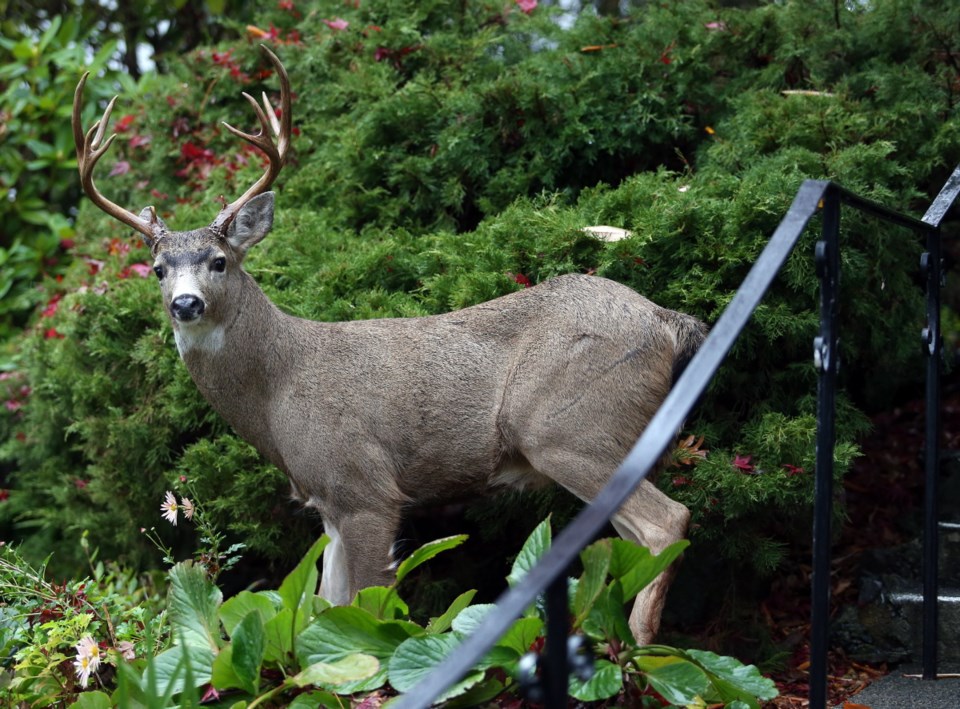Greater Victoria municipalities will have to work together if they want to see any success in managing local deer populations, says a report going to Capital Regional District directors Wednesday.
“A piecemeal approach to regional deer management will be neither successful nor economical,” says the CRD staff report, which says deer management has to be sustained to be effective and pilot projects will have only short-term impact.
The report leaves it up to directors to decide if the deer-management service should continue through the CRD. “A majority of municipalities will need to be involved (whether or not the CRD plays a co-ordinating role) to realize sustainable improvements,” it says. But at least one local animal-rights activist worries the only management option being presented is a cull.
“This is just so frustrating, because it looks like the only option anyone has is to cull deer,” said Kelly Carson of DeerSafe Victoria. “What’s so frustrating is that all of this is being undertaken without a deer count. Nobody knows there’s an over-population. It’s assumed because there are sightings by individuals.”
But Oak Bay Mayor and CRD chairman Nils Jensen said Oak Bay discovered in meetings with provincial veterinarians that there are no viable alternatives to a cull for reducing deer populations.
Since 2013, the CRD has spent about $195,000 on two deer-management pilot projects — one in Central Saanich and one in Oak Bay that saw 11 urban deer trapped and euthanized. Oak Bay’s controversial cull, which prompted protests, was conducted over 16 days. Traps were set up on private property and the deer were killed with a bolt gun. First Nations were offered the killed deer.
In the rural pilot project, 16 farms have been visited by the CRD since 2013 for crop-damage inspection and assessment. Staff provided information on fencing, municipal permits, firearms licences and use of scaring and hazing tactics. The CRD report does not say how many rural deer were culled.
The Peninsula and Area Agriculture Commission has asked that the CRD continue to provide deer management and the Islands Trust has asked that the CRD consider preparing and possibly managing and funding a fallow deer-management plan for Mayne Island.
CRD staff say $25,000 remains in the existing program budget and the CRD is exploring the potential for undertaking a region-wide deer count with the University of Victoria.
Jensen said it’s clear that urban deer are a problem, based on the number of deer carcasses collected by city crews. “About eight years ago, there were no deer deaths and last year, there were 39. So it’s a clear escalation,” he said.
Jensen agreed that any deer-management strategy should be region-wide.
If deer management were to become an ongoing CRD service, the report suggests:
- Primary emphasis should be placed on public education and conflict reduction.
- Work with the province or other stakeholders is needed to document regional deer populations.
- The province must play a stronger role in provision of equipment and expertise and establishing permitting requirements.
- Any population reduction should be undertaken over a broader geographic area and over a longer time period.



